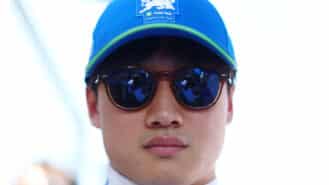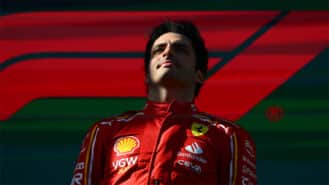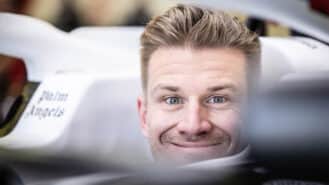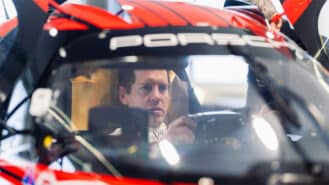
Only Tsunoda can save F1 in 2025: Japan GP – Going up, going down
In the face of soul-destroying boredom, only one driver can bring the entertainment needed to rescue a sport which resembles a broken AI tribute to itself
A series taken from the 164-page Motor Sport special Great Racing Cars, which is available to buy here
To buy the lead image click here.
From the editor Damien Smith
How would you define a ‘great’ racing car? Race wins and championship titles are an obvious place to start – and admittedly, when we began the process of rounding up the ‘voices’ to fill this special magazine, published by the team behind Motor Sport, we had in mind the likes of the Lotus 72, Ferrari F2004, Porsche 917, Audi R10 and so on.
But as the interviews of familiar racing figures began, we realised greatness is often a very personal thing. Naturally, most – but not all – would pick cars they had experienced first-hand, as a driver, designer, engineer or team boss. And on occasion the cars that stood out in their minds as ‘great’ weren’t necessarily so in the grand scheme of history. That’s why you’ll find a Minardi here among Formula 1 cars from Lotus, Williams and McLaren.
Unexpected? Certainly. Wrong? Not to the man who chose it.
As the interviews accumulated, our magazine took on a life of its own, full of personal anecdotes about the myriad cars that made careers. Some of those we spoke to, such as Mario Andretti and Dan Gurney, couldn’t be tied to a single choice from multi-faceted lives at the wheel. Such heroes have earned the right to choose an F1, sports and Indycar, so we allowed them more than one bite.
Others refused to be confined by category. Hence the short ‘Odd ’n Sods’ chapter on cars that, by and large, are mere footnotes in lower divisions of racing lore.
Thus there is nothing definitive about the selection listed herein. Then again, there’s no claim that this compilation offers the ‘Greatest Racing Cars’ of history. It’s much more personal than that, much more quirky – and all the better for it.
1987-93 Lance Delta HF Integrale
Romain Grosjean
Lotus F1 driver, GP2 champion
I loved the Lancia Delta Integrale when I was a kid. My Dad had all the evolutions of the road car and of course when I saw them rallying it made it all very special. It is like when you are a kid and you taste something nice, you want more and more.
There was also a top Swiss team called Scuderia Filoncore that did very well on the rally scene and my father did some legal work for them, so we had some links to the car. Of course I loved the colours and the fact that Didier Auriol was competitive in one in 1992 when he won lots of rallies but just missed out on the title. I was crying in front of the TV because he deserved to be champion that year for sure.
I haven’t driven one but would absolutely love to one day. It is the car I want to have in my garage one day definitely, but for now being a new father there is no chance!
The ultimate Delta: the fearsome S4
A close encounter with the monster of all rally cars, recorded by Matthew Franey back in 1997
Not only is the Delta S4 the most powerful rally car ever built, it is also the machine that claimed the life of Henri Toivonen, Lancia’s world champion in the making, on the 1986 Tour de Corse.
The Italian marque’s riposte to its hi-tech rivals, the Audi Quattro and Peugeot Turbo 16, the Delta S4 was unveiled to the media at the end of 1984, a year before its spectacular but brief entry on the world stage. Four-wheel drive with a unique in-line four-cylinder 1.7-litre engine that had both a supercharger to produce formidable low-end power and a KKK turbo to provide the high-rev grunt, the Delta was developed throughout 1985, making a brilliant debut on the RAC Rally that November. Britain’s world championship round was usually an event that Lancia avoided, and the Delta arrived in the United Kingdom among rumours of fragility and concern about its handling and power. It was classic Italian sandbagging. In the hands of Toivonen, the S4 swept to a convincing one-two as its rivals fell away.
The Delta’s success lay in the radical route that Lancia had taken at the new car’s conception. Gone were 20 years of monocoque-based Lancias, the S4 being built around a lightweight tubular spaceframe with the engine, unlike the Audi, mounted amidships, giving the four-wheel-drive brute greater poise and considerably less understeer than its rivals.
Notable entrants: Lancia, Jolly Club
Notable drivers: Juha Kankkunen, Miki Biasion, Markku Alén, Didier Auriol, Carlos Sainz, Bruno Saby, Tommi Mäkinen
Debut: 1987 Monte Carlo Rally
Achievements: 44 wins
Constructors’ Championships: 6 (1987-92)
Drivers’ Championships: 4 (1987-89, 1991)
Suspension came in the form of wishbones front and rear, the latter using twin dampers to improve poise, with power transmitted through a five-speed Hewland gearbox to the centre differential from where the driver could adjust the power distribution. Pulling tight the six-point harness as I contemplate what lies ahead of me, the interior of the S4 is stark, functional but curiously antiquated. Ridiculous images of film footage from early space missions flash through my mind. Aluminium reflective foil lines the dividing wall between my neck and the 500bhp behind it and a grey alloy dash sweeps across the cabin, punctuated only by large square red warning lights which seem to have no purpose other than decoration. Just one ominously large dial commands your attention, a rev counter that enters its yellow stage at 8500rpm, a red line at 9000. To the right of the leather wheel, now worn shiny with use, sits a switch numbered one to four indicating the variations in available turbo boost – boost that you know is set to redefine your opinions on what constitutes real acceleration.
Carbon sheets line the cockpit walls, joining the spaceframe tubing, and it quickly becomes clear that this is more a purpose-built race car with body panels haphazardly dropped on top than a simple rally car. Reaching for the ignition it dawns on me that the Delta S4 has just one purpose to go as fast as possible from A to B.
Only one man really tamed the S4, wrung more from it than any other Lancia driver: Henri Toivonen. The Finn could do things which made his colleagues shake their heads in disbelief; but eventually even he was unable to control the Delta on the frighteningly quick Tour de Corse. Toivonen’s fatal accident shook the rallying community and rang the death knell for Group B. Earlier in the year catastrophe had already struck in Portugal when a Ford RS200 flew into the crowd killing several spectators. The second fatal accident of the year was one too many for the sport’s governing body, who banned the supercars for the 1987 season.
Taken from the October 1997 issue of Motor Sport. To read more click here.

In the face of soul-destroying boredom, only one driver can bring the entertainment needed to rescue a sport which resembles a broken AI tribute to itself

Waking up at 4am on a Sunday is rarely worth it, especially when Max Verstappen looks poised to take another lights out to chequered flag victory — as he did…

Should there be a new prize for a team finishing sixth in the championship – just like the Jim Clark Trophy in the good old turbo times?

Sebastian Vettel is set to test a Porsche 963 Hypercar, having already been linked with a Le Mans drive. But would his return really add that much to the world of racing?